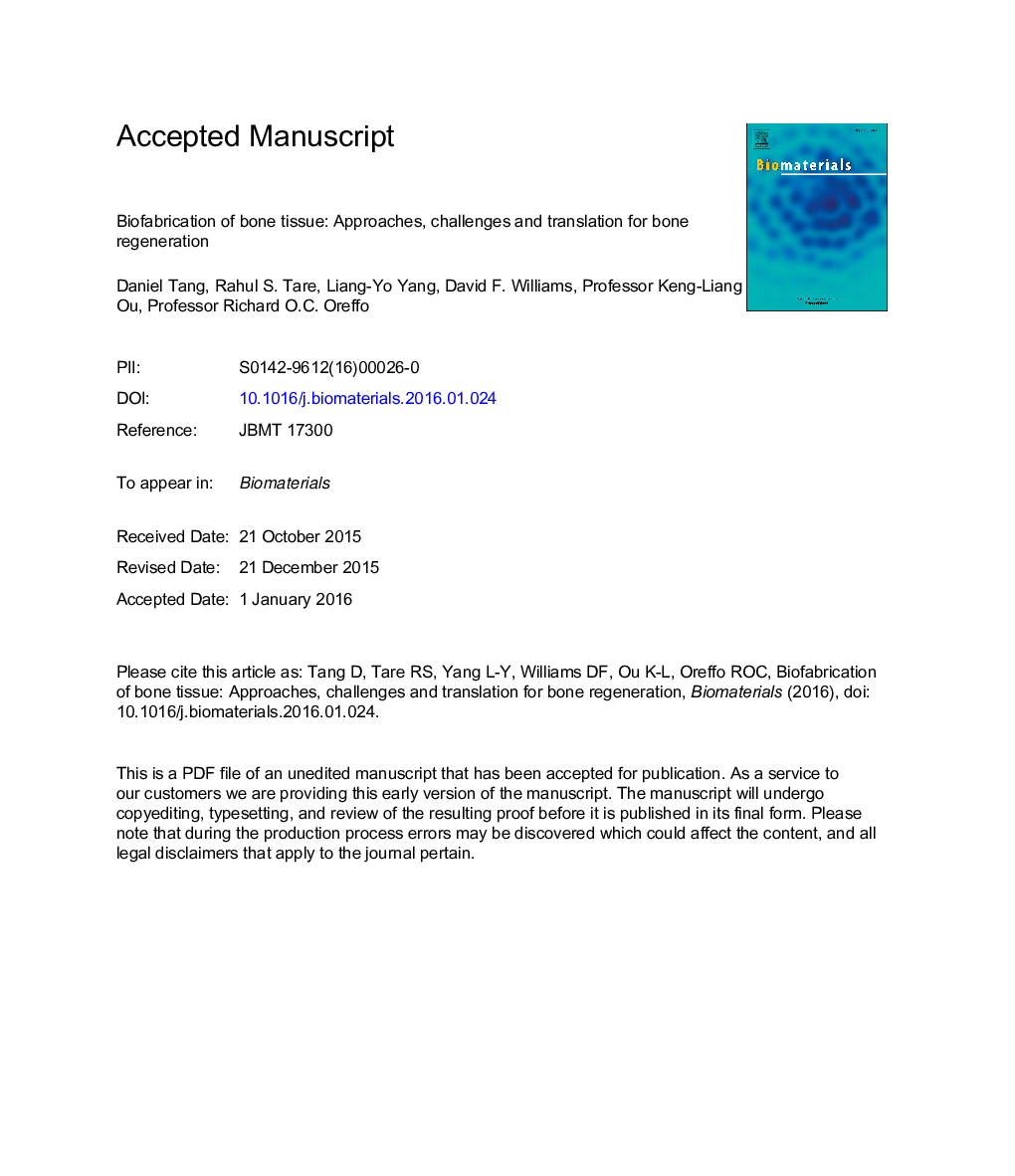| Article ID | Journal | Published Year | Pages | File Type |
|---|---|---|---|---|
| 6485122 | Biomaterials | 2016 | 43 Pages |
Abstract
The rising incidence of bone disorders has resulted in the need for more effective therapies to meet this demand, exacerbated by an increasing ageing population. Bone tissue engineering is seen as a means of developing alternatives to conventional bone grafts for repairing or reconstructing bone defects by combining biomaterials, cells and signalling factors. However, skeletal tissue engineering has not yet achieved full translation into clinical practice as a consequence of several challenges. The use of additive manufacturing techniques for bone biofabrication is seen as a potential solution, with its inherent capability for reproducibility, accuracy and customisation of scaffolds as well as cell and signalling factor delivery. This review highlights the current research in bone biofabrication, the necessary factors for successful bone biofabrication, in addition to the current limitations affecting biofabrication, some of which are a consequence of the limitations of the additive manufacturing technology itself.
Related Topics
Physical Sciences and Engineering
Chemical Engineering
Bioengineering
Authors
Daniel Tang, Rahul S. Tare, Liang-Yo Yang, David F. Williams, Keng-Liang Ou, Richard O.C. Oreffo,
